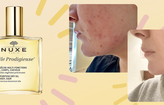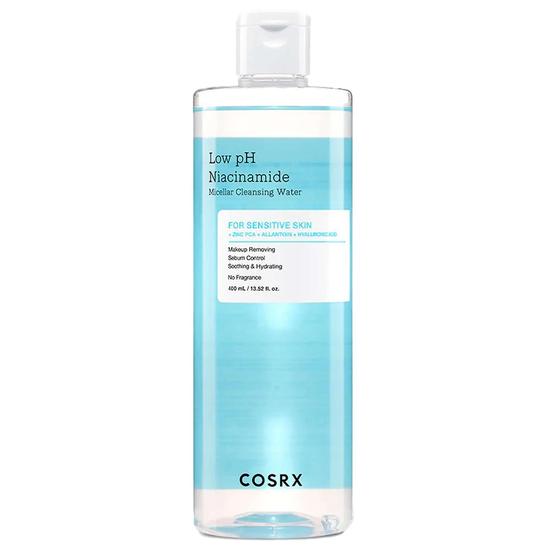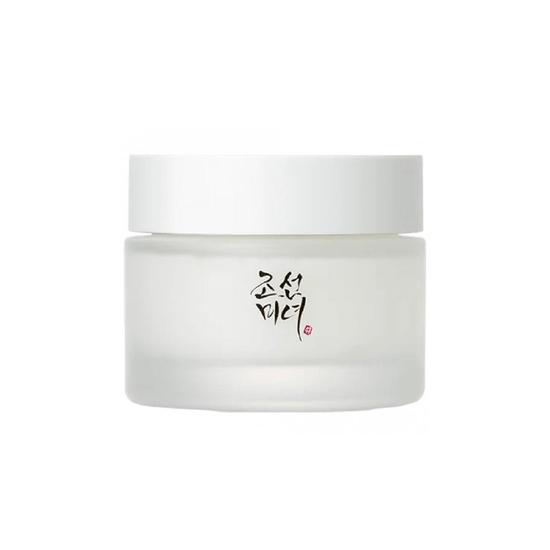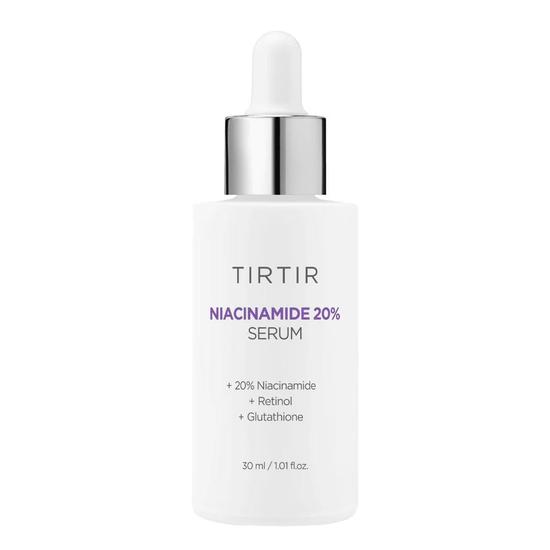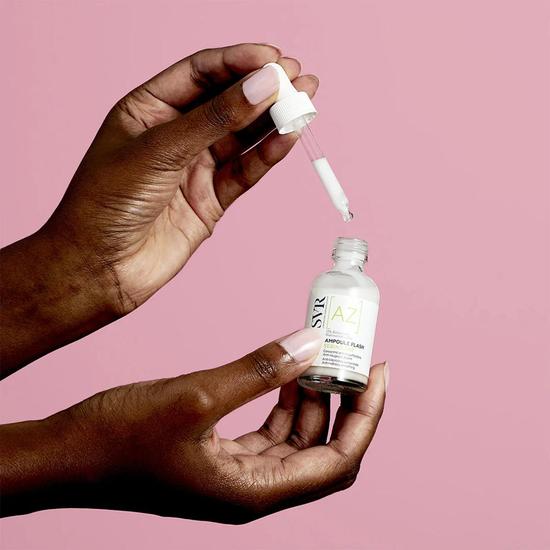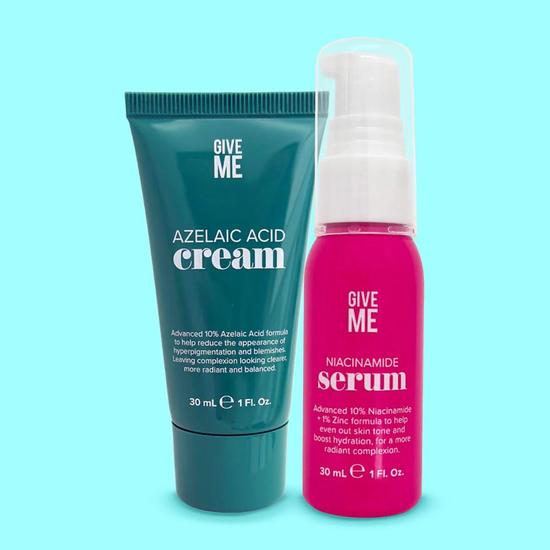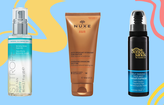
- Skin
- Azelaic Acid With Niacinamide
Can You Use Azelaic Acid With Niacinamide?
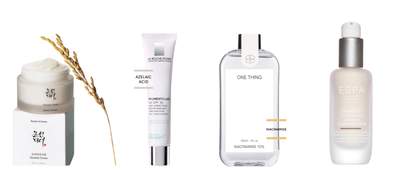
Calming, clearing and clarifying, azelaic acid and niacinamide could be a dream come true for anyone in search of a blemish-free, even face. Both actives are fairly gentle on the skin and renowned for their acne-fighting properties. Each adds what the other lacks: azelaic acid gently exfoliates, mattifies, and goes the extra mile by helping to combat irregular skin texture; niacinamide soothes and can help diminish fine lines and wrinkles. Individually, they both bring spot-fighting, melanin-inhibiting and sebum-regulating benefits to the table.
Can You Use Azelaic Acid With Niacinamide?
Yes—and this duo is a top-tier combination for calming skin, reducing redness and improving texture without irritation.
Azelaic acid and niacinamide are two of the gentlest yet most effective active ingredients in skincare. Both are well tolerated, even by sensitive or reactive skin, and they target some of the most common skin concerns—such as acne, pigmentation, redness, and uneven texture.
Unlike harsher actives like AHAs, BHAs, or retinoids, this pair is perfect for those who want visible results without compromising their skin barrier. Together, azelaic acid and niacinamide can help you achieve clearer, calmer, and more balanced skin—without the risk of flaking, stinging, or purging.
👉 Already know the benefits of each ingredient?
Jump To Routine
What does azelaic acid do for your skin?
Azelaic acid is a dicarboxylic acid with antimicrobial and anti-inflammatory properties. It gently exfoliates the skin while helping to reduce redness, pigmentation, and acne. Unlike stronger acids like glycolic or salicylic, azelaic acid is mild and suitable for sensitive skin types.
It’s available in both over-the-counter and prescription-strength formulas (typically between 5–20%) and is often recommended for those with rosacea, acne, or post-inflammatory hyperpigmentation.
Key benefits of azelaic acid:
- Reduces inflammation: Calms redness, rosacea, and active breakouts.
- Fades pigmentation: Treats melasma, sun spots, and post-acne marks.
- Clears pores: Mildly exfoliates to help prevent clogged pores and blackheads.
- Fights acne: Inhibits acne-causing bacteria without resistance risk.
- Evens skin tone: Smooths rough patches and reduces blotchiness.
- Well-tolerated: Less irritating than other exfoliating acids.
Best for:
- Rosacea-prone skin
- Acne and post-acne marks
- Sensitive skin with discolouration
- Texture irregularities
Azelaic acid works well both morning and night and can be used daily depending on formulation strength and skin sensitivity.
What does niacinamide do for the skin?
Niacinamide, also known as vitamin B3, is a water-soluble vitamin and a true multitasker. It strengthens the skin barrier, regulates oil production, fades pigmentation, and calms inflammation—all without irritating the skin. Because it’s so versatile and gentle, it plays well with nearly all other ingredients.
Niacinamide is commonly found in serums, moisturisers, and toners, often at concentrations between 5–10%.
Key benefits of niacinamide:
- Calms inflammation: Reduces redness, sensitivity, and irritation.
- Fades hyperpigmentation: Targets dark spots and post-acne marks.
- Controls oil: Minimises shine and the appearance of large pores.
- Strengthens skin barrier: Improves resilience against environmental stressors.
- Boosts hydration: Increases ceramide production for plumper skin.
- Improves texture: Refines skin surface and smooths rough patches.
Best for:
- Sensitive or reactive skin
- Acne-prone skin
- Dull, uneven complexions
- Anyone looking to support their skin barrier
Niacinamide is non-acidic, non-exfoliating, and highly unlikely to cause irritation—making it suitable for daily use and for layering with actives like acids or retinoids.
Comparing Azelaic Acid and Niacinamide Side-by-Side
| Benefit | Niacinamide | Azelaic Acid |
|---|---|---|
| Primary Function | Balances oil, strengthens barrier, and brightens uneven tone | Targets redness, pigmentation, and blemishes with anti-inflammatory action |
| Fades Hyperpigmentation | ✅ Helps reduce dark spots and even tone | ✅ Brightens and visibly reduces pigmentation |
| Reduces Redness & Inflammation | ✅ Calms sensitivity and irritation | ✅ Strong anti-inflammatory and redness-reducing effects |
| Treats Acne & Blemishes | ✅ Regulates oil and minimises breakouts | ✅ Fights acne-causing bacteria and unclogs pores |
| Improves Skin Texture | ✅ Refines and smooths uneven texture | ✅ Gently exfoliates for clearer skin |
| Boosts Hydration & Barrier | ✅ Strengthens and locks in moisture | ✅ Supports skin barrier and reduces irritation |
| Irritation Potential | ✅ Very low – suitable for all skin types | ⚠️ Mild tingling possible at higher strengths |
| Suitable for Sensitive Skin | ✅ Excellent choice for sensitive or combination skin | ✅ Very well tolerated and rosacea-safe |
| Best Time to Use | AM and PM – layers easily with other actives | AM or PM – works well with calming or hydrating serums |
How to use niacinamide and azelaic acid together
These two ingredients can be layered in the same routine without conflict. Their pH levels and chemical profiles are compatible, and neither is likely to deactivate or destabilise the other.
Option 1: Layer in the same routine (recommended)
Apply niacinamide and azelaic acid in any order, depending on product formulation. If using two serums:
- Use the thinnest-textured product first.
- Allow it to absorb, then apply the second serum.
- Finish with a moisturiser and SPF if it’s daytime.
Example routine (AM or PM):
Cleanser → Niacinamide serum → Azelaic acid cream/gel → Moisturiser → SPF (if AM)
Option 2: Alternate morning and night
If your products are strong (e.g. 20% azelaic acid), you may want to space them out to avoid piling on actives.
AM: Niacinamide
PM: Azelaic acid
FAQs
Which goes first—niacinamide or azelaic acid?
It depends on product texture. Apply the lighter (more watery) formula first, then follow with the thicker one. If both are similar, the order isn’t critical.
Can I use them every day?
Yes. Most people tolerate daily use of both niacinamide and azelaic acid. If irritation occurs, try reducing frequency or using one in the morning and one at night.
Is this combo safe for rosacea?
Yes. Both ingredients are commonly recommended for calming rosacea symptoms. Start with low concentrations and patch test if you’re unsure.
Keeping an eye out for more rosacea remedies? Try The Best Face Masks for Redness and Irritation, compiled to help soothe and nourish your skin. For any azelaic acid enthusiasts: read up on How To Get Rid Of Textured Skin for more skincare ingredient and product recommendations.

Written by Maria Mukaranda
Maria’s background is rooted primarily in creative media and a love for all things written, expressed through experience both online and in print; for creative platforms spanning from music to fashion to beauty.
Top Posts

